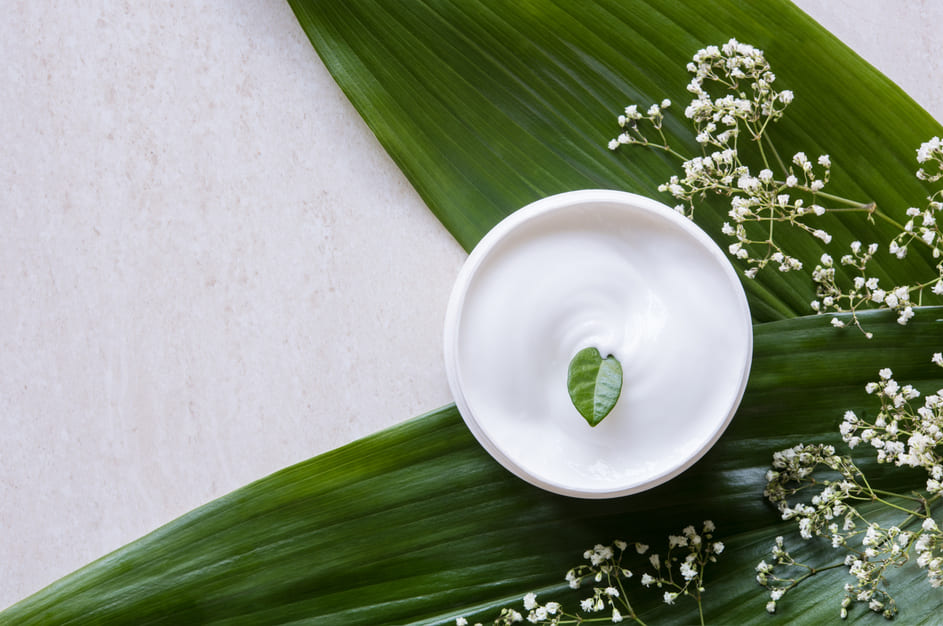Biocosmetics are an evolution of natural skin care and organic cosmetics, featuring more than 99% plant-derived ingredients. While natural ingredients have numerous benefits for our hair, skin, and body, beauty brands need to go further, as important new dynamics in the natural beauty market arise. Biocosmetics provide a distinct answer for these new consumer demands that brands need to address.
Certainly, the natural beauty movement continues to shape the industry, as consumers become more conscious of the ingredients used in BPC. Now, they are actively seeking out what is thought to be safe, with 44%agreeing that natural ingredients are safer than their mainstream synthetic counterparts (Mintel, 2019). This is particularly the case amongst women aged between 25-54.
This trend shows no sign of slowing; currently, this age group of women says they are willing to pay more for products with natural ingredients. However, as the younger segment of this group ages, their preference for natural ingredients will become an expectation rather than a perk, suggesting that ‘natural’ may longer be an effective brand differentiator, even when holding natural and organic certifications This is where biocosmetics come in – here, we discuss their features in a little more detail.
Content
What are biocosmetics?
Biocosmetics are skin and body care products made from natural ingredients of plant origin. These raw materials don’t necessarily have to be organically grown; they can be farmed using traditional means or come from innovative lab-based cultivation processes.
From tattoo-healing formulas to restoring skin elasticity and hair wellness, natural solutions are increasingly providing efficient and popular treatments for nature and health-conscious consumers. Biocosmetics go a step further.
The following points summarize biocosmetics’ key features:
- 99% or more of its components have to be plant-based
- No preservatives, dyes, silicones, or other artificial substances
- Never tested on animals
- The packaging is always recycled or recyclable
- The environmental impact of biocosmetic production is minimal, as well as other processes such as transport and storage
- Biocosmetics must have Ecocert, Cosmébio, USDA or BDIH certifications
Whether or organically or scientifically produced, sustainability is always a crucial feature. Biocosmetics understands that sometimes, the most sustainable cultivation techniques happen in lab settings, so researchers seek to find cutting-edge ways to harvest natural ingredients.
Provital is already developing ingredients from plant stem cells. We already have our actives Lingostem™, Orchistem™, and Citrustem™on the portfolio. For instance, Orchistem™ uses lab-grown orchid stem cells to unlock the rejuvenating rare plant. The orchid stem cells stimulate communication between skin stem cells and fibroblasts, resulting in a global rejuvenating effect.
What’s the difference between biocosmetics and organic cosmetics?
As we’ve seen above, biocosmetics and organic cosmetics are not the same. On the one hand, it’s true that both biocosmetics and organic cosmetics share a common goal: using natural ingredients that are safe and plant-based.
However, there are at least two key differences between the two:
- Organic cosmetics are defined by being made entirely from natural and organic ingredients, that is, ingredients that have grown following guidelines of organic farming (including the need to be processed without the use of synthetic chemicals, pesticides, or fertilizers).
- Contrary to what happens with biocosmetics, there are specific certifications targeting organic cosmetics. These standards are issued by a recognized certification body and aim at certifying particular requirements, such as that a certain percentage of the ingredients in the cosmetic product must be certified organic. On the other hand, there are no such specific standards or certifications that target biocosmetics.
How to tell biocosmetics from other types of cosmetics
As we’ve seen above, there’s not one particular certification that can verify that a cosmetic product can be considered as part of biocosmetics.
However, looking at the characteristics of biocosmetics that we’ve outlined above, it’s possible to make a preliminary verification checklist that consumers can use in case they want to determine whether a cosmetic formulation can be considered as part of biocosmetics:
- This checklist starts by looking at the formulation’s INCI, the International Nomenclature for Cosmetic Ingredients or, in other words, the ingredients that are part of a cosmetic formulation. At this point, consumers can notice if the formulation includes natural ingredients as well as synthetic chemicals such as parabens, or artificial fragrances, among other problematic ingredients.
- Concerning animal testing, some of the most well-known certifications include those developed by PETA, CCF (Choose Cruelty Free) and Leaping Bunny.
- Finally, as we’ve mentioned above, some certifications can verify some of the features that define whether a formulation is part of biocosmetics or not, including those issued by Ecocert, Cosmébio, USDA o BDIH.
Are biocosmetics effective?
Despite the consistent demand for natural ingredients, one issue remains a key driver for purchase decisions: efficacy. As such, natural or biocosmetic ingredients must serve a concrete purpose, particularly to appease younger, research-driven consumers. Ultimately, their product choice will be based on efficacy, so brands must steer clear of gimmicks. Certainly, there is growing hype around the natural credentials of biocosmetics – but do they really work? Although it is, of course, difficult to generalize, biocosmetics have one advantage: their natural composition makes it easy to create hypoallergenic and gentle formulas.

Combining nature and science
The beauty market is highly competitive and brands often rely on ingredients to stand out from the crowd. Women, particularly younger women, now expect brands to use natural ingredients. This is what makes biocosmetics such a compelling proposition: with close to 100% naturally-derived ingredients, these products create a key differentiator in a saturated market. Moreover, there is incredible potential to also meet the demand for superior efficacy, as the biocosmetics ethos aims to combine nature and science. Looking to the future, we can expect to see many more biocosmetics labels that foreground innovating with nature.
No comments yet
There are no comments on this post yet.





Leave a comment